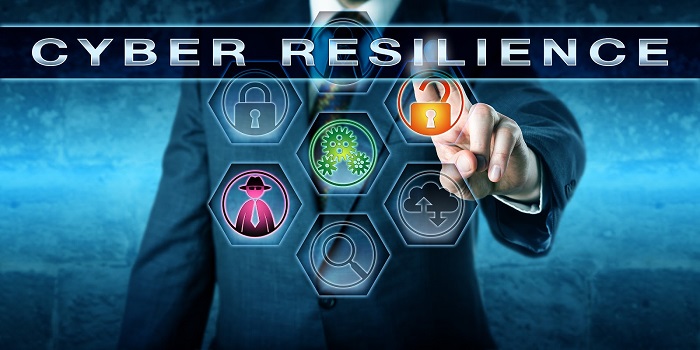 Natural disasters, global pandemics, and economic volatility have exposed the fragility of supply chains, healthcare systems, and businesses in general. Organizations have declared their intention to bounce back and rebuild more resilient businesses, but not all of them have the capacity to do so. Very few companies are able to design for, measure, and manage resilience.
Natural disasters, global pandemics, and economic volatility have exposed the fragility of supply chains, healthcare systems, and businesses in general. Organizations have declared their intention to bounce back and rebuild more resilient businesses, but not all of them have the capacity to do so. Very few companies are able to design for, measure, and manage resilience.
Business resilience: Its importance and benefits
Resilience can be defined as a company’s ability to absorb stress, recover functionality, and thrive amid different circumstances. Business resilience is important, now more than ever, because the landscape is evolving at an unprecedented rate.
As the World Economic Forum noted, “We think about resilience as our ability to withstand, adapt to and recover from disruption due to a sudden shock, rapidly changing circumstances or chronic stress.”
In 2020, the COVID-19 pandemic delivered a tremendous shock to the global economy. Government-mandated shutdowns worldwide cost businesses and their employee’s income – losses that continue to be unpredictable and painful. Some organizations were able to pivot to remote or home-based work to continue generating revenue. But for others, the pandemic has been a business and job killer.
Resiliency means being able to take a longer view. This includes being able to invest in products or processes that will help the organization thrive competitively in the future. The short term may involve painful survival, with limited services, shorter hours, and layoffs to conserve cash.
Resilient business plan for and invest in the future, even though it may appear to be unpredictable and uncertain.
Whatever short-term inconveniences organizations encounter on their way to building business resiliency are outweighed by its benefits. Resiliency allows companies to recognize potential threats faster and plan for them, and it gives businesses the ability to withstand the initial shock and rebound faster. Resilient companies emerge stronger, ready to take on the demands of the post-shock environment.
Any effort at building business resilience should begin with a thorough understanding of the principles behind enduring systems:
Redundancy is the duplication of critical components or functions of a system with the intention of improving it. An example of this is having different factories manufacture the same product. In an IT context, it means having a backup system in the event that the primary one fails. Systems and data backup is a service offered by Nashville-based managed IT services provider ImageQuest to mitigate data loss and operations downtime.
Diversity goes beyond hiring people from different backgrounds and with different cognitive profiles. It is creating an environment that fosters creative, out-of-the-box thinking. In terms of cybersecurity, diversity can be the range of data protection measures businesses could implement against cyber attacks, as outlined in this white paper.
A modular structure is comprised of units that are designed to be independent but could also function as a whole. Modularity means business units can be reconfigured as necessary to optimize efficiencies. With its inherent scalability, cloud services empower businesses to ramp up operations on an as-needed basis.
Adaptability enables organizations to immediately adjust to changing needs, such as being able to pivot to a work-from-home arrangement due to a sudden pandemic. Our solutions allow people to work anywhere – from a client’s office or their home – while staying secure, data compliant, and productive.
Prudence is having the foresight to prepare a contingency plan for potential risks with significant consequences. We strongly recommend our clients not only have disaster recovery and incident response plans but also that they simulate those plans to find errors and gaps. We can assist with scenario planning and execution.
Embeddedness is the awareness that an organization’s goals and initiatives should be aligned with those of the community it belongs to.
How to build business resilience
Seen from a different perspective, a crisis is an impetus for change. It is a good time for organizations to revisit their business models and build greater resilience, starting with these steps:
Think of adversities as opportunities. In the event of a crisis, don’t just aim to repair any existing damages or for things to get back to where they once were. Adjust to the new reality and identify opportunities that come along with it.
Look toward the future. This means foregoing quick wins for long-term organizational change and growth.
Take on a collaborative mindset. Business resilience is concerned with how a business and its components can change under stress. Collaboration among employees, customers, and stakeholders is thus important.
Go beyond the bottom line. Resilience cannot be quantified by shareholder value. There should be metrics for capabilities like flexibility and adaptation.
Champion diversity. The ability to respond to a situation in different ways is dependent on having a culture that values divergent thinking.
Make change your default mode. Resilience is less about managing extreme circumstances and more about building organizations that excel amidst constant change and experimentation.
In a world where transient, record-breaking achievements are commonplace, it will be sustained resilience that will set businesses apart from the rest.
A managed IT services provider in Nashville, Tennessee, ImageQuest can help you build a robust resiliency strategy, which includes the cloud services provision, cybersecurity assessment, vendor review, and 24/7 network monitoring and response. For more information on managed IT service, contact ImageQuest at 888.979.2679.